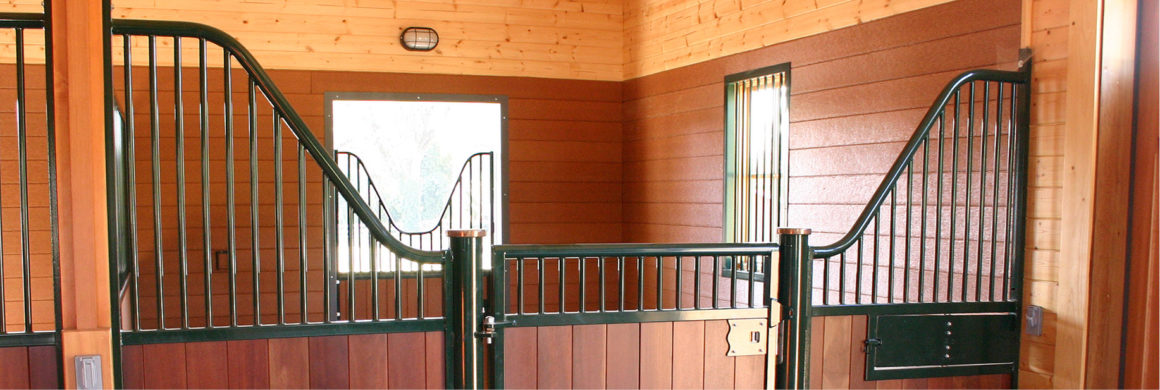Your horse spends a large amount of his time in his stall, and anytime you put a horse in an enclosed space, there’s potential for him to get injured. Poorly designed stalls can lead to plenty of accidents, but many of these risks can be prevented through careful stall design and construction. Read on for details on how we recommend Equine Facility Design clients build their stalls for maximized safety.
Plan for Generously Sized Stalls
Starting with the right stall size can help to prevent casting, and can also keep your horses more comfortable. Stall size depends on the types of horses that your barn will be housing, but in most cases a 12’x12’ minimum stall is a good place to start.
Stall height is equally as important, and a generous stall height can help to prevent head injuries. A 10’ minimum stall height will work in many barns, though in some barns we manage to work with 12’ stall heights.
Appropriate stall door sizes can also help to prevent hip injuries and other accidents. We recommend a 4’ minimum stall door width, which is industry standard for fabrication. We have done doors up to 5’ wide at a client’s request – we’re always happy to find ways to make your unique barn design work.
Start with the Right Materials
While material type will vary depending on your desired finish and the structural system in your barn, we usually recommend using wood or HDPE recycled plastic tongue-and-groove lumber for stall walls. The HDPE lumber is highly desirable because it’s safe and won’t splinter if a horse does kick. It’s also non-absorptive and doesn’t require any maintenance or finish, so you don’t have to worry about staining and painting. It’s easy to clean and durable, making it a great choice for a long-lasting stall.
Carefully Choose Windows
Windows are an ideal way to provide mental stimulation and ventilation to your stalled horse, but they need to be installed correctly to be safe. We install all windows so that the sills are 4’ above the finished floor. Always use safety glass in stall windows, then protect the windows with grilled guards.
Install the Right Base
When it comes to the stall base, we typically work with either a compacted gravel or concrete base. Then, we install interlocking rubber mats over the base. The interlocking feature helps to keep the mats together and prevents them from shifting.
Consider Two Stall Doors
Installing a second stall door in the back of the stall is ideal for many reasons. It can provide easy access to a run attached to the stall. It’s also an ideal safety feature, since it creates two exits. In the case of a barn fire or other emergency, having a second door that you can access without going into the barn can be key to your safety.
In choosing a stall latch, we recommend ones that offer two-sided operation for both convenience and safety. Finger latches have minimal hardware but operate well.
When it comes to building, expanding, or renovating your barn, making the right design choices can help to keep your horses safe in their stalls. If you have questions about your upcoming project, please contact us. We would be happy to work with you to help bring your dream barn to life.



[…] Read more: https://equinefacilitydesign.com/facility-planning-design/steps-safer-stall.htm […]